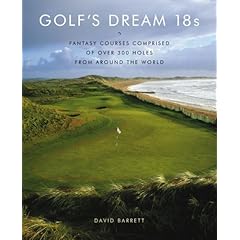 "Under the Apple Tree: The History of Golf in Westchester County" was written by Dr. William Quirin, official historian of the Metropolitan Golf Association and the author of 40 books on golf and racing. I had a tiny role in the work when I had the pleasure of reading an early version and offering a (very) few editorial suggestions last year.
"Under the Apple Tree: The History of Golf in Westchester County" was written by Dr. William Quirin, official historian of the Metropolitan Golf Association and the author of 40 books on golf and racing. I had a tiny role in the work when I had the pleasure of reading an early version and offering a (very) few editorial suggestions last year. Among the issue's many treasures are dozens of pictures, old and new, of golf then and now in Westchester county. Among them are sketches of the the clubhouse at Pelham and photos of the 1911 Men's U.S. Amateur Championship at Apawamis, Gene Sarazen playing night golf in Briarcliff and Annika Sorenstam teeing off at the JAL Big Apple Classic at Wykagyl. The pictures are worth revisiting time and time again.
While Quirin gives plenty of ink to important events in golf history like the role Wykagyl played in the founding of the PGA, Knollwood's grill room discussion between Clifford Roberts and Bobby Jones that led to the establishment of the Master's Tournament, and Winged Foot's storied role as a championship venue, he also dug up some slightly more obscure tales that I found even more interesting. Briarcliff Golf Club, for example, was a nine-hole course built in 1902 by Walter Law for the guests of Briarcliff Lodge. Quirin says,
"...it boasted a most unusual first hole--a 250-yard par 4 starting from a tee atop the pro shop in front of the Lodge, with a toboggan-slide drop of 250 feet down the hill to a green nestled in the valley below near Dalmeny Road. Gene Sarazen made a famous hole-in-one there in the 1920s."You won't find the course today, but nearby is Trump National, built on the other side of the road on the site of a course originally known as Briar Hall, designed by Devereux Emmet and opened in 1922.
The public courses aren't ignored, either. Quirin gives an excellent account of the beginnings of daily fee golf in the county with the building of Mohansic Golf Course in Yorktown, which was opened in 1925 by the County Parks Commission.
This publication belongs in every golfer's library no matter where you live. Copies are available for only $15 directly from the Westchester Historical Society. While you're ordering, consider a membership to show your support for the organization's work to keep our past alive.
Dave Donelson, author of Heart of Diamonds a romantic thriller about blood diamonds in the Congo

